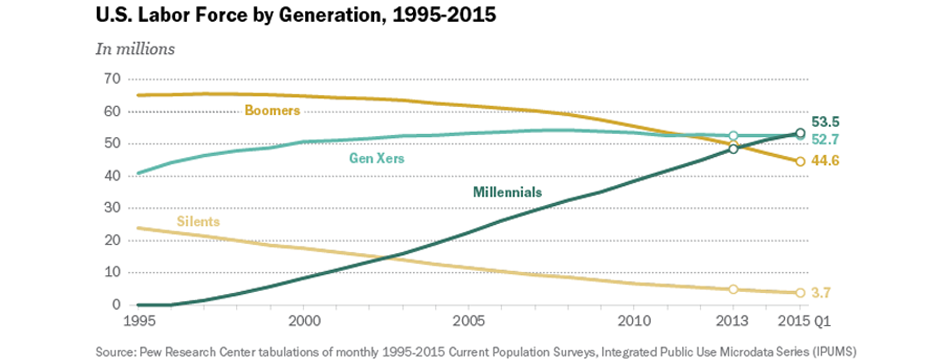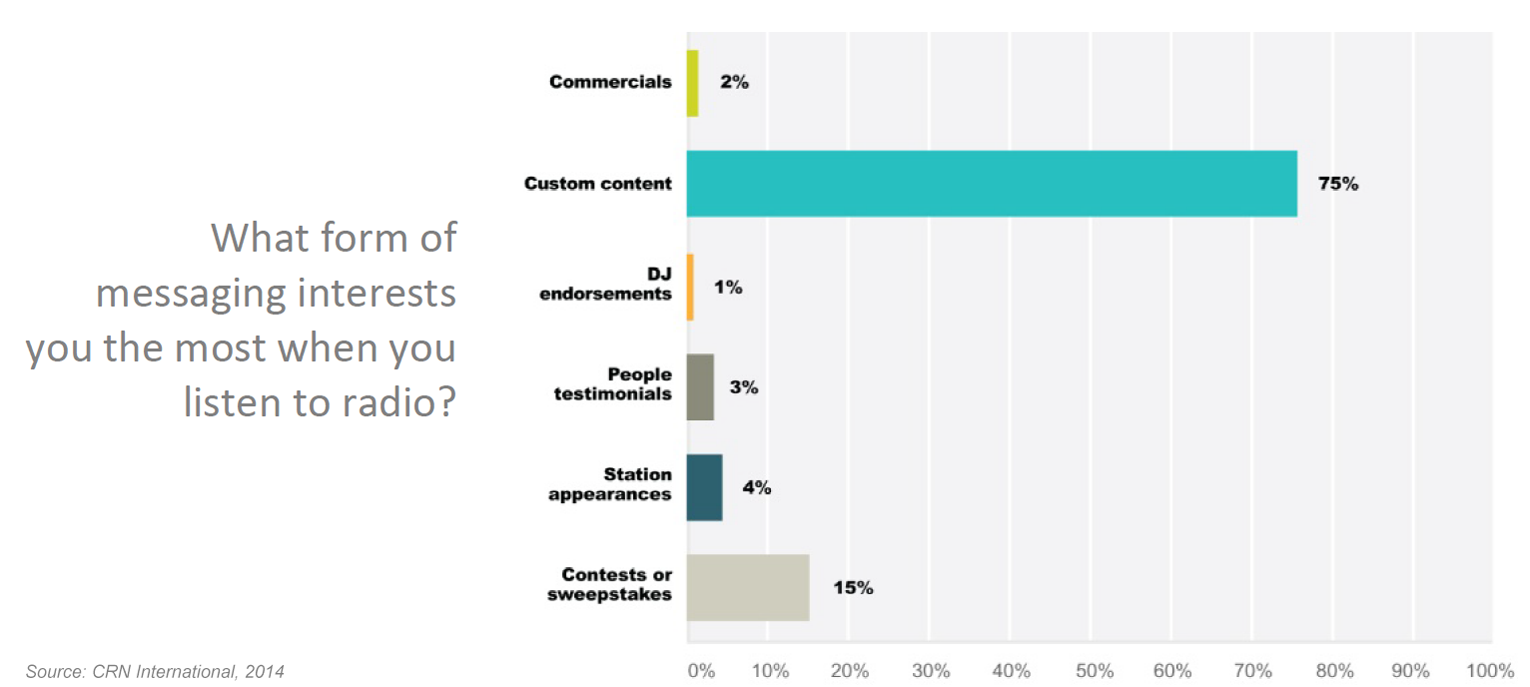Why do Millennials matter? There is a lot of talk in the United States about Millennials and most of it seems to be some sort of complaint. However, there is more to this generation than a different work style, a need for affirmation, and disinterest in owning cars or subscribing to cable television. This generation is big, commands a lot of spending power and can be found constantly on their mobile devices, including listening to streaming music.
1) The Largest Generation in U.S. History Has Arrived
Millennials are now the largest adult population in the United States, totaling 83.1 million (compared to Baby Boomers who now total 75.4 million). According to Pew Research, Millennials make up the largest portion of the labor force, with more than one third of American workers being between the ages of 18 and 34.
2) Millennials Influence Other Generations and Brands Alike
Perhaps most important though, is their spending power. It’s estimated Millennials will be spending $200 billion annually by 2017 and $10 trillion over their lifetimes. They’ve already surpassed Baby Boomers in size and shortly are predicted to eclipse them in spending power as well. This doesn’t even include the influence they have over other generations when it comes to consumerism. According to Forbes, Millennials influence their parents heavily when it comes to what products to buy, what types of music to listen to, what shops to patronage, what restaurants to visit and what trips to take. For advertisers, targeting and influencing Millennials is critical to their success. The question is where to find them.
3) Where do Millennials Spend Time? On Mobile.
Mobile device usage has increased so significantly, that it has overtaken desktop as the most-used digital platform for all ages. According to comScore, mobile-only Internet usage is driven by Millennials, as 21% are no longer using desktop computers to go online. This explains the wide acceptance and use of mobile-only applications like Snapchat, Uber, and Tinder among the Millennial demographic.
4) How Can Brands Reach Millennials? On Streaming Music Services.
Millennials are known to be multitasking, multiscreen users. So how can brands ensure their full attention? Advertising on streaming music services like Spotify and Pandora. Eighty-five percent of Millennials own a smartphone and of those smartphone users, 64% consume music on their smartphones. If brands promote products through streaming services, they are more likely to be heard by Millennials.
It should also be noted that Millennials aren’t likely to pay for music either. Data released this year from Strategy Analytics concluded that 89% of Internet radio listeners today prefer ad-supported listening, as opposed to 11% opting for the subscription model. Millennials aren’t interested in downloading music, they’re interested in streaming… and for free. A recent report from Nielsen suggests that the numbers are even higher, with 95% of online music streaming being ad supported. This means advertisers have a direct avenue to Millennials while they’re streaming
What are Millennials Looking for? Convenience.
Millennials were raised on technology and as a cohort are generally accepting and open to new technologies. That being said, they expect it to be simple and easy to use, yet sophisticated and intuitive. Technology brands have come to accept this and large companies like Apple, Amazon and Google have worked to simplify the UX and make it easier for consumers to access what they came for when using the respective technologies.
Apps like GrubHub, Uber and Spotify make it possible for users to access what they want, when they want it. The convenience of these applications puts the pressure on advertisers to deliver the same kind of experience through their ads. In a CRN Research Report on Millennials, 75 % of respondents said that when listening to music, they are most interested in listening to ads that provide useful or entertaining information about an area of interest to them. This far surpassed the second most popular answer, which was the promotion of contests or sweepstakes (15%).
This shows that Millennials are not averse to advertisements, especially when they can receive some sort of benefit or entertainment out of it.
XAPPmedia brings all of these things together with voice-activated technology that allows consumers to instantly and conveniently use their voice to interact with advertised offers on streaming music services. Millennials can’t be bothered to unlock their phone while they’re streaming music, working out, and reading the latest eBook. Responding by voice makes it easy and quick to respond to a brand offer, save a song to a music library, or share the latest hit on social networks, which are all things that Millennials are apt to do… at the same time.
Related Posts
Nielsen Data Confirm Listener Time Shift to Ad-Supported Online Audio
New Data: Consumers Prefer Ad-Supported Listening
Internet Radio’s Ad-Supported Present and Future


